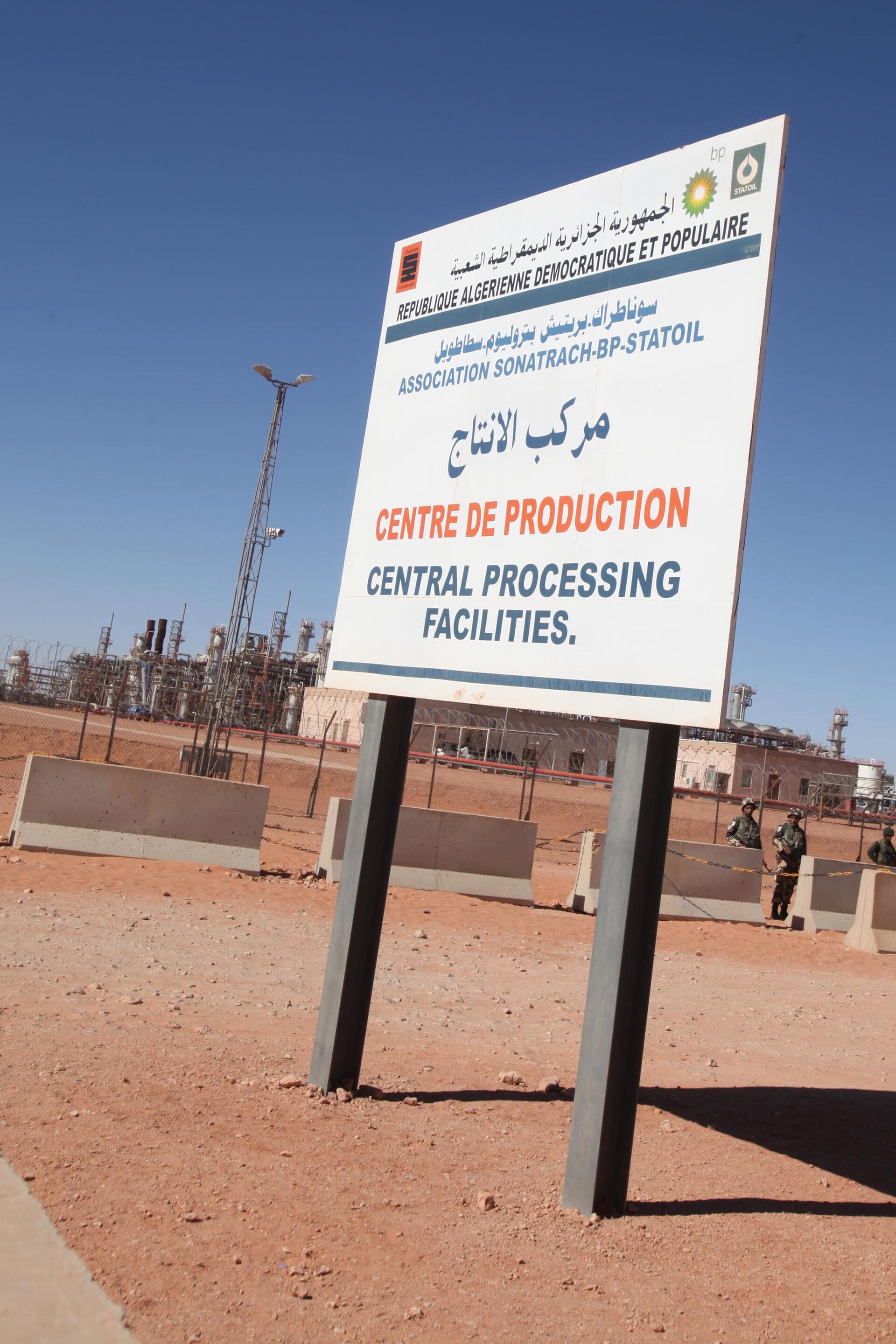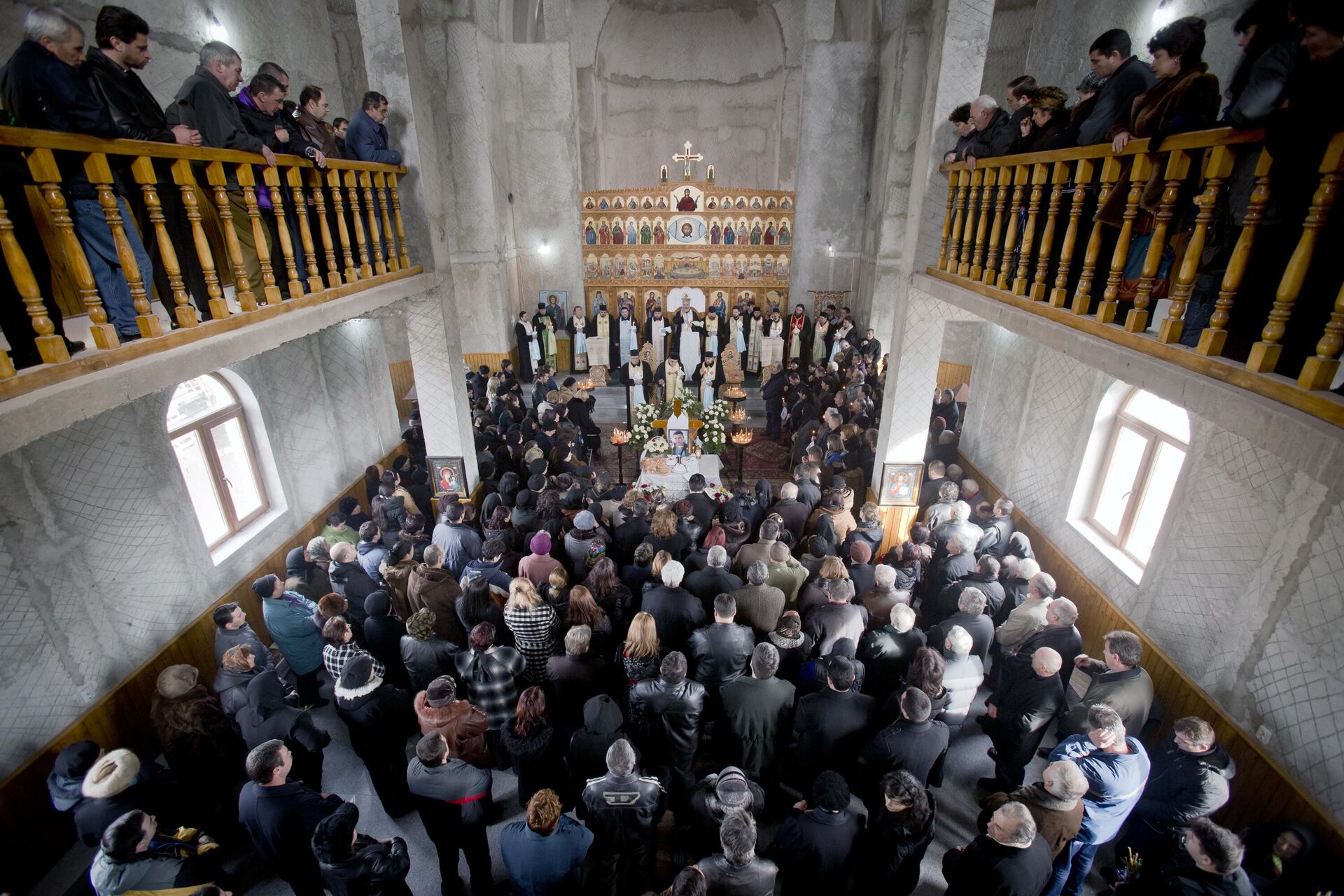https://sputnikglobe.com/20230116/ten-years-since-algerias-in-amenas-hostage-crisis-how-events-unfolded-1106404874.html
Ten Years Since Algeria's In Amenas Hostage Crisis: How Events Unfolded
Ten Years Since Algeria's In Amenas Hostage Crisis: How Events Unfolded
Sputnik International
The article is dedicated to the event that occurred ten years ago on January 16, 2013, as a terrorist group associated with the Al-Qaeda jihadist organization, seized control over an oil and gas complex in the town of In Amenas in eastern Algeria, taking several hundred of people hostage.
2023-01-16T16:28+0000
2023-01-16T16:28+0000
2023-01-22T08:02+0000
africa
north africa
algeria
terrorism
terrorist attack
algiers
hostage
africa in details
https://cdn1.img.sputnikglobe.com/img/07e7/01/10/1106404221_0:160:3073:1888_1920x0_80_0_0_305512ec37167d97dfb46a9f89a14883.jpg
The incident started in the early morning of January 16, 2013. About 32 Islamists in four to five vehicles, who had come to Algeria from Mali and Libya, attacked two buses transporting workers from a natural gas plant to the airport in In Amenas in far eastern Algeria, about 60 kilometers west of the border with Libya. During the attack, the militants killed a number of the employees. Then, heavily armed militant gunmen in Toyota Land Cruisers stormed the entrance of the gas plant and accommodation blocks, where many workers had been preparing for their shift. Apart from that, the militants attacked the Central Processing Facility. They rigged the plant with explosives, claiming that any attempts to save the hostages "will end tragically."The terrorists had inside intelligence and detailed plans of the 15-hectare site. The gas field is operated by the Algerian state oil company Sonatrach with the British firm BP and the Norwegian firm Statoil. For several hours, the gunmen hunted for foreigners which were working at the site along with Algerians, taking them hostages and killing those who tried to run away. Some of the hostages had explosives strapped around their necks or waists. The main goal of the terrorists was to capture as many foreigners as possible and transport them to Mali to use them as hostages in negotiations on the termination of the international military operation against the Islamists in this country. Several Algerians helped to hide foreigners, giving them their clothes.The terrorists also planned to blow up the gas processing plant.By the afternoon, the world was provided with little information on the hostage crisis carried out by an Islamist group called "Those who Sign with Blood." Later, it was found that the terrorist group consisted mainly of Tunisians (11 people), Egyptians (seven), and Malians (five). In addition, it included three Algerian citizens and immigrants from Canada, Niger, and Mauritania. The well-known smuggler and leader of the terrorist group Mokhtar Belmokhtar, who was in northern Mali at the time, led the training of militants in Niger and their activities.Rescue OperationThe Algerian military, despite its initial intentions not to engage in negotiations with terrorists, nevertheless held preliminary talks with the leaders of the group, taking into account the number of foreign hostages. According to the authorities, when it became clear that negotiations were useless, elite units of the army intervened.By early morning of the next day, the Algerian Armed Forces surrounded the site and fired at it from helicopters, destroying the militants' vehicles by which they were planning to transfer the hostages. During the first military assault in the area of the residential part of the site, in the living quarters, the forces managed to help hundreds of employees of the gas complex escape and prevent the plant from being blown up. The operation of the military was complicated by extremely unfavorable conditions as the gas complex, in which 790 employees worked and lived, including 134 foreigners from 26 countries from across the world. It included residential buildings, as well as huge rooms with the equipment of a gas processing plant, where the terrorists who survived the first assault took refuge. With seven foreign hostages, the bandits barricaded themselves in one of the rooms, after blowing up the approaches to it.The Final Assault & End of SiegeThe final assault began on the morning of January 19. The special forces were able to get close to the place, where the militants with hostages were hiding, and offered the bandits the opportunity to surrender. The terrorists, who realized their failure, managed to execute seven foreign citizens and then were shot by the special forces.The military seized a significant arsenal of weapons from the terrorists, including six automatic rifles, 21 Kalashnikov assault rifles, two rifles with optical sights, grenade launchers, portable rocket launchers with shells and hand grenades. During the operation, the Algerian military rescued 685 Algerians and 107 foreigners, while 29 terrorists were eliminated and three were taken into custody. The victims of the terrorist attack were 37 hostages from eight countries, including the United States, the UK, France, Japan, Romania, Malaysia, Norway and the Philippines. The attack had far-reaching consequences. In particular, lawsuits were filed against BP in the UK and the US as they failed to protect their staff and ensure their safety at the Algerian facility. The state company Sonatrach closed two of its three facilities in the area following the incident. On February 22, 2013, the company on behalf of the joint venture started up a limited production at the In Amenas plant. Full production recommenced in September 2014. In France and the UK, criminal cases in connection with the incident were opened. As part of the British investigation, 69 witnesses were questioned and 73 pieces of physical evidence examined. The three terrorists who were captured are serving their sentences in Algerian correctional facilities. It turned out that they had been already wanted for other crimes.* terrorist organization outlawed in Russia and many other states.
africa
north africa
algeria
algiers
Sputnik International
feedback@sputniknews.com
+74956456601
MIA „Rossiya Segodnya“
2023
News
en_EN
Sputnik International
feedback@sputniknews.com
+74956456601
MIA „Rossiya Segodnya“
Sputnik International
feedback@sputniknews.com
+74956456601
MIA „Rossiya Segodnya“
algeria, hostage-taking, terrorist attack, al-qaeda, in amenas hostage crisis, terrorism, hostages
algeria, hostage-taking, terrorist attack, al-qaeda, in amenas hostage crisis, terrorism, hostages
Ten Years Since Algeria's In Amenas Hostage Crisis: How Events Unfolded
16:28 GMT 16.01.2023 (Updated: 08:02 GMT 22.01.2023) Longread
This January 16, Algeria marks the tenth anniversary of one of the largest hostage crises of the 21st century, in which a terrorist group associated with the Al-Qaeda* jihadist organization seized control of an oil and gas complex in the town of In Amenas in eastern Algeria, taking several hundred of people hostage.
The incident started in the early morning of January 16, 2013. About 32
Islamists in four to five vehicles, who had come to Algeria from Mali and Libya, attacked two buses transporting workers from a natural gas plant to the airport in In Amenas in far eastern Algeria, about 60 kilometers west of the border with Libya. During the attack, the militants killed a number of the employees.
Then, heavily armed militant gunmen in Toyota Land Cruisers stormed the entrance of the gas plant and accommodation blocks, where many workers had been preparing for their shift. Apart from that, the militants attacked the Central Processing Facility. They rigged the plant with explosives, claiming that any attempts to save the hostages "will end tragically."
The terrorists had inside intelligence and detailed plans of the 15-hectare site. The gas field is operated by the Algerian state oil company
Sonatrach with the British firm BP and the Norwegian firm
Statoil.
For several hours, the gunmen hunted for foreigners which were working at the site along with Algerians, taking them hostages and killing those who tried to run away. Some of the hostages had explosives strapped around their necks or waists.
The main goal of the terrorists was to capture as many foreigners as possible and transport them to Mali to use them as hostages in negotiations on the termination of the international military operation against the Islamists in this country. Several Algerians helped to hide foreigners, giving them their clothes.
The terrorists also planned to blow up the gas processing plant.
By the afternoon, the world was provided with little information on the hostage crisis carried out by an Islamist group called "Those who Sign with Blood." Later, it was found that the terrorist group consisted mainly of Tunisians (11 people), Egyptians (seven), and Malians (five). In addition, it included three Algerian citizens and immigrants from Canada, Niger, and Mauritania. The well-known smuggler and leader of the terrorist group Mokhtar Belmokhtar, who was in northern Mali at the time, led the training of militants in Niger and their activities.
The Algerian
military, despite its initial intentions not to engage in negotiations with terrorists, nevertheless held preliminary talks with the leaders of the group, taking into account the number of foreign hostages. According to the authorities, when it became clear that negotiations were useless, elite units of the army intervened.
By early morning of the next day, the Algerian Armed Forces surrounded the site and fired at it from helicopters, destroying the militants' vehicles by which they were planning to transfer the hostages.
During the first military assault in the area of the residential part of the site, in the living quarters, the forces managed to help hundreds of employees of the gas complex escape and prevent the plant from being blown up. The operation of the military was complicated by extremely unfavorable conditions as the gas complex, in which 790 employees worked and lived, including 134 foreigners from 26 countries from across the world. It included residential buildings, as well as huge rooms with the equipment of a gas processing plant, where the terrorists who survived the first assault took refuge. With seven foreign hostages, the bandits barricaded themselves in one of the rooms, after blowing up the approaches to it.
The Final Assault & End of Siege
The final assault began on the morning of January 19. The special forces were able to get close to the place, where the militants with hostages were hiding, and offered the bandits the opportunity to surrender. The terrorists, who realized their failure, managed to execute seven foreign citizens and then were shot by the special forces.
The military seized a significant arsenal of weapons from the terrorists, including six automatic rifles, 21 Kalashnikov assault rifles, two rifles with optical sights, grenade launchers, portable rocket launchers with shells and hand grenades.
During the operation, the Algerian military rescued 685 Algerians and 107 foreigners, while 29 terrorists were eliminated and three were taken into custody. The victims of the terrorist attack were 37 hostages from eight countries, including the United States, the UK, France, Japan, Romania, Malaysia, Norway and the Philippines.
The attack had far-reaching consequences. In particular, lawsuits were filed against BP in the UK and the US as they failed to protect their staff and ensure their safety at the Algerian facility. The state company Sonatrach closed two of its three facilities in the area following the incident. On February 22, 2013, the company on behalf of the joint venture started up a limited production at the In Amenas plant. Full
production recommenced in September 2014.
In
France and the UK, criminal cases in connection with the incident were opened. As part of the British investigation, 69 witnesses were questioned and 73 pieces of physical evidence examined. The three terrorists who were captured are serving their sentences in Algerian correctional facilities. It turned out that they had been already wanted for other crimes.
* terrorist organization outlawed in Russia and many other states.




